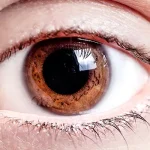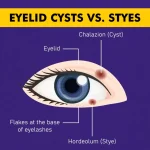Specs removal surgery is an elective procedure that helps individuals eliminate their dependence on corrective eyewear, such as spectacles or contact lenses. The techniques involved are of three types- laser-based, surface ablations and lens-based.
-> Flap-Based Procedures: Use advanced lasers like LASIK to reshape the cornea and correct refractive errors with quick visual recovery.
-> Surface Ablation Procedures: Techniques like PRK reshape the cornea without a flap, ideal for thin corneas or active lifestyles.
-> Lens-Based Procedures: Involve implanting artificial lenses (like ICL or RLE) to correct vision, especially for high prescriptions or early cataracts.
This type of surgery is an effective option for individuals with refractive errors, such as myopia (nearsightedness), hypermetropia (farsightedness), and astigmatism.
How Does Specs Removal Surgery Work?
The procedure involves using a laser to precisely alter the shape of the cornea, allowing light to be correctly focused onto the retina. There are multiple techniques used for specs removal surgery, each with unique benefits depending on the patient’s eye condition.
Types of Specs Removal Surgery
SILK (Smooth Incision Lenticule Keratomileusis)
SILK is one of the most advanced forms of eye surgery that reshapes the cornea with high precision. It is a flapless laser eye surgery, offering a more gentle and less invasive alternative to traditional LASIK procedures. Recovery is faster with minimal discomfort, making it ideal for active lifestyles.
Custom Eyes with Foresight
Custom Eyes technology is an advanced version of LASIK, which tailors the treatment to your eye’s unique characteristics. It uses advanced wave-front guided mapping technology that captures up to 1,50,000 data points of the cornea, allowing for ultra-precise correction. It enhances visual clarity by correcting even subtle distortions. This personalisation significantly improves outcomes in night vision and contrast sensitivity. Additionally, AI-based real-time mapping allows for adjustments during the procedure, while 7D tracking helps monitor eye movement, ensuring accurate results.
SMILE (Small Incision Lenticule Extraction)
SMILE is a minimally invasive laser treatment for the eyes to remove glasses. It involves creating a small incision of just 2 mm and extracting a lenticule from the cornea, which helps correct refractive errors without requiring a corneal flap.
Smart Surface
Smart Surface is a no-touch, flapless and blade free procedure which uses laser pulses to reshape the cornea. The advent of this procedure reduced the risk of creating a flap (as seen in LASIK) and making the healing process more efficient (as compared to PRK) and reducing the risk of dry eye. It avoids physical contact with the eye, making it safer for patients with thin corneas.
Contoura Vision
Contoura Vision is a topography-guided LASIK procedure that maps 22,000 unique elevation points on the cornea, offering ultra-precise correction tailored to your eye’s surface. It enhances visual sharpness and reduces issues like halos, glare, and night vision difficulties beyond standard LASIK.
Presbymax
Presbymax is a laser vision correction technique specifically designed for treating presbyopia (age-related near vision loss). It creates a customised multifocal corneal profile, enabling clear vision at multiple distances- near, intermediate, and far- without the need for reading glasses.
LASIK (Laser-Assisted In Situ Keratomileusis)
LASIK is the most commonly performed eye surgery for specs-removal. It involves creating a 22 mm flap on the cornea, reshaping the underlying tissue using a laser, and then repositioning the flap. This procedure provides quick recovery and minimal discomfort.
PRK (Photorefractive Keratectomy)
PRK is an alternative to LASIK, particularly for individuals with thin corneas. Instead of creating a flap, the outer layer of the cornea is removed, and a laser is used to reshape the surface. Though the recovery time is longer, PRK is a suitable option for patients who may not be eligible for LASIK.
ICL (Implantable Collamer Lens)
For individuals who are not suitable candidates for laser surgery, an ICL procedure can be performed. This involves implanting a biocompatible lens inside the eye to correct vision, without altering the cornea.
Read more about the 4 Specs removal operations you should ask your doctor about!
There are other specs removal surgeries as well.
Who Is Eligible for Specs Removal Surgery?
Specs Removal Surgery Age Limit
The ideal age for specs removal surgery is typically between 18 to 40 years. This is because younger individuals may experience changes in their vision.
Other Eligibility Criteria
- A stable eyeglass prescription for at least one year
- No existing eye diseases, such as glaucoma or severe dry eyes
- Good overall eye health
- Not pregnant or nursing (as hormonal changes can affect vision)
- The corneal thickness should be at a minimum of 480-500 microns.
- The refractive error limit varies for different surgeries, like for cornea-based it ranges between -6D to -12D, while for lens-based it is up to -20D.
Benefits of Specs Removal Surgery
- Freedom from Glasses and Contact Lenses: Reduces or eliminates dependence on corrective eyewear.
- Improved Vision: Many patients achieve 20/20 vision or better post-surgery.
- Long-Lasting Results: Once stabilised, the results of specs removal surgery can last for decades. However, it is important to note that reading glasses will be a requirement after 40 years of age.
Risks and Considerations
While specs removal surgery is generally safe, it is important to understand potential risks:
- Dry Eyes: Some patients experience temporary dryness post-surgery.
- Halos or Glare: Especially noticeable at night, but usually diminishes over time.
- Flap Complications (LASIK-Specific): The corneal flap created during LASIK requires careful handling to avoid complications.
- Under-correction or Over-correction: In rare cases, an additional enhancement procedure may be needed.
Can Specs Be Removed Naturally?
There is no scientifically proven natural method to eliminate refractive errors permanently. While eye exercises, a balanced diet, and proper eye care can support eye health, they do not provide the same level of correction as specs removal surgery. Laser treatment for eyes to remove specs remains the most effective solution for long-term vision correction.
Specs Removal Surgery Cost
The specs removal surgery cost varies depending on factors such as:
- Type of procedure (LASIK, PRK, SMILE, or ICL)
- Technology used in the procedure
- Surgeon’s experience and hospital reputation
- Location of the clinic or hospital
On average, the cost ranges from ₹20,000 to ₹85,000 per eye. Some premium procedures, such as ICL surgery, may be on the higher end of the spectrum.
Recovery and Aftercare
Immediate Post-Surgery Care
- Avoid rubbing your eyes for at least a week.
- Use prescribed eye drops to prevent infection and dryness.
- Rest your eyes and limit screen time for the first few days.
Long-Term Care
- Attend all follow-up appointments to monitor healing.
- Wear UV-protective sunglasses to shield your eyes from bright light for a few weeks.
- Avoid swimming and strenuous activities for a few weeks.
Specs removal surgery is an effective and widely performed procedure for individuals looking to eliminate their dependence on glasses or contact lenses. With advancements in laser technology, procedures like SILK, SMILE, Custom eye LASIK, Contoura vision, Smart surf, and ICL provide safe and reliable options for vision correction. However, eligibility, risks, and post-surgery care should be carefully considered before undergoing the procedure.
Experience clear vision and freedom from glasses. Book Your Consultation
FAQs
No, the procedure is performed under local anaesthesia, ensuring that patients do not feel pain. Some mild discomfort or irritation may occur during recovery.
Most patients recover within a few days to a week. However, complete stabilisation of vision may take several weeks to months.
No, not everyone is a candidate. Patients with unstable prescriptions, severe dry eyes, corneal diseases, or certain medical conditions may not be eligible.
Success rates are high, with a majority of patients achieving 20/20 or near-perfect vision. However, outcomes depend on individual factors such as prescription strength and eye health.
In most cases, the correction is permanent. However, natural ageing processes, such as presbyopia or cataract formation, may affect vision over time.





